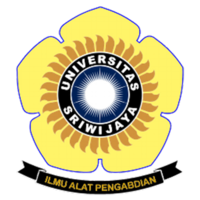Pertumbuhan dan Produktivitas beberapa Varietas Kangkung serta Potensi Produksi Benihnya pada Lahan Kering Suboptima
Abstract
Halimi ES, Negara ZP, Siringoringo VVB. 2022. Growth and productivity water spinach and potential to produce seeds at suboptimal land. In: Herlinda S et al. (Eds.), Prosiding Seminar Nasional Lahan Suboptimal ke-10 Tahun 2022, Palembang 27 Oktober 2022. pp. 178-188. Palembang: Penerbit & Percetakan Universitas Sriwijaya (UNSRI).
Water spinach (Ipomea reptans Poir.) is a very popular vegetable crop in Indonesia mostly cultivated by the famers at sub-optimal-dry land. Research was carried out at Expermental Station Faculty of Agriculture, Universitas Sriwijaya in August 2020-April 2021. The obyectives were to identify superior variety in growth, productivity, and potency to produce their seeds for next period of planting. Research was designed as a Randomized Block Design (RBD) with 3 blocks and 3 varieties of Bangkok, Bisi, and Hapsari planted in 40 cm x 20 cm. Plant samples were taken separately for vegetable and for seed production. Research indicated that Hapsari variety showed better growth, higher yield, and performed better appearance, freshness, scent, and flavor valued by the local respondens. Furthermore, this research revealed that seed production by the farmer could possibly made by maintaining 11-16 plants that were not harvested for fresh-vegetable product. At about 180 days after planting, those plants were flowering and able to produce about 16.8-25 g seeds per plant or totally about 957-988 seeds that approximately enough for about 100 m2 cultivation area.
Water spinach (Ipomea reptans Poir.) is a very popular vegetable crop in Indonesia mostly cultivated by the famers at sub-optimal-dry land. Research was carried out at Expermental Station Faculty of Agriculture, Universitas Sriwijaya in August 2020-April 2021. The obyectives were to identify superior variety in growth, productivity, and potency to produce their seeds for next period of planting. Research was designed as a Randomized Block Design (RBD) with 3 blocks and 3 varieties of Bangkok, Bisi, and Hapsari planted in 40 cm x 20 cm. Plant samples were taken separately for vegetable and for seed production. Research indicated that Hapsari variety showed better growth, higher yield, and performed better appearance, freshness, scent, and flavor valued by the local respondens. Furthermore, this research revealed that seed production by the farmer could possibly made by maintaining 11-16 plants that were not harvested for fresh-vegetable product. At about 180 days after planting, those plants were flowering and able to produce about 16.8-25 g seeds per plant or totally about 957-988 seeds that approximately enough for about 100 m2 cultivation area.
Keywords
bangkok, bisi, hapsari, Ipomea-reptans
Full Text:
PDFArticle Metrics
Abstract view : 311 timesPDF - 1972 times
Refbacks
- There are currently no refbacks.

